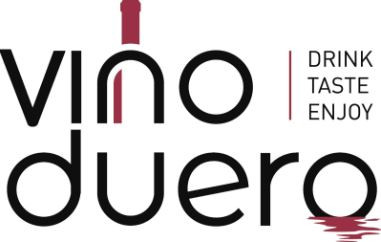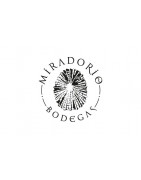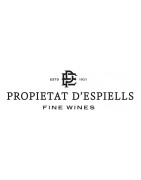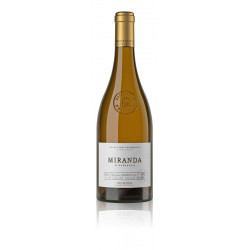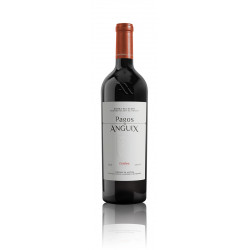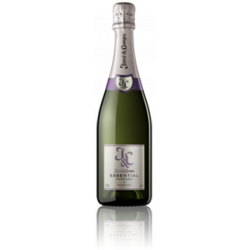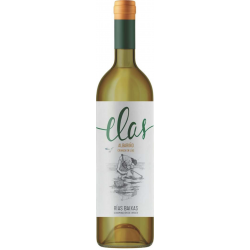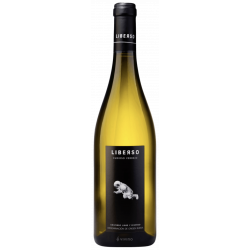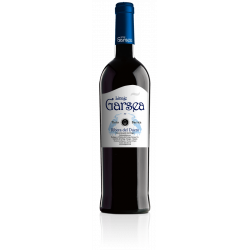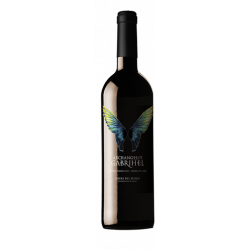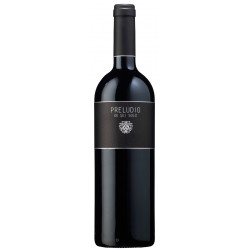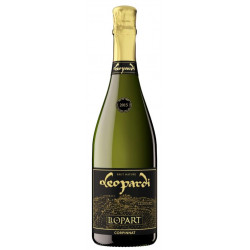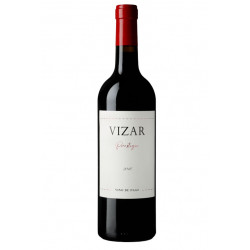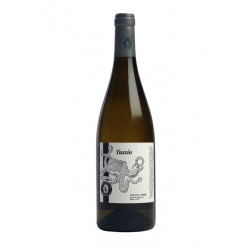Winery
Subcategories
-
Tres Piedras
TresPiedras is a project focused on recovering sustainable traditional viticulture, reconstruction of historic vineyards and others of high value, to create fine, unique, authentic, and elegant wines of very small production, which transmit the essence of each plot, variety, and soil.
-
Doble R
Created in 1964 by the parents and grandparents of the current generation of winegrowers, Doble R winery was one of the first wineries in the Ribera del Duero region.
Over the years, the winery has evolved, grown, and adapted to the changing times.
They have maintained the essence of the original winery, which was created with such effort and dedication by the founding families.
-
Hemar
In the heart of the Ribera del Duero, is the town of Fuentecén (Burgos), where our winery is located.
Hemar is a family winery dedicated to the cultivation of its vineyards, the production and marketing of wines with Designation of Origin Ribera del Duero.
Its wines are a sure bet for quality and modernity in the DO Ribera del Duero.
-
Castelo de Medina
From the heart of the Rueda Denomination of Origin, in Villaverde de Medina, it's winery of reference thanks to the 180 hectares of our own 30 years old vineyard and the soul of our wines, which express the nature of our surroundings and the character of its most special grape variety, Verdejo.
-
La Val
"Wine is made in the vineyard"
This is Bodegas La Val’s philosophy in a nutshell. We invest in our produced wine from our traditional vineyards.
Not only do we belong to the Rias Baixas D.O., but we also were one of its promoters.
Preserving and respecting our history is essential to us, which doesn’t deny the use of state-of-the-art technology in our production.
-
Miradorio de Ruiloba
And why not? That is the question we asked ourselves around a table and with a recently uncorked bottle of txakolí…
That was the starting point to materialize that dream, for many a madness that, shared with our family and a friend who still believes in romanticism, we began to believe in ourselves and work, with the sole objective of seeing this project become a reality.
-
Vizar
We are guardians of the art of making wine from the humble intention of paying homage to our territory, with the commitment to protect it and make it known through our wines, which are our best ambassadors. Besides, our winery has the ecologic certification, as a sign of our love and respect for the vineyards.
-
Llopart
Our history is as deeply rooted in Subirats as our vines are. For centuries, our ancestors have worked these lands, which have witnessed family dedication to vine growing and winemaking since Bernardus Leopardi was granted the Can Llopart estate as stated in a parchment from 1385.
-
Sei Solo
All the grapes come from a single municipality, but given the interesting variation of soils in La Horra, the different orientations of each vineyard and the type of Tempranillo in each one, at the end of the ageing process each batch has its own personality.
All our plots are harvested by hand in small boxes, inspecting all the bunches, one by one, on the selection table upon arrival at the winery.
-
Linaje Garsea
Linaje Garsea wines have the flavour of the walks through the vineyards at dawn. To stare at the only ray of sunshine of the Ribera del Duero winter illuminating the promise of an excellent grape. They have the aroma of the hours, days, thinking and tasting. And the silence full of nuances of an afternoon listening to how the oak barrels breathe in the cellar.
That something is the affection of seven brothers who live wine without compromise. We received a legacy, and we tried to turn it into an expression of respect, passion and craftsmanship. And we enjoy it every day. So if that something would have a name that does not have that name, it would be Linaje Garsea.
-
ASTIL
The vineyard is a living entity, and if you love it then it'll love you too. So every sip of wine at the results in a unique gift.
In winter, the vine rests. ASTIL team prune leaving only 3 stems for the future and past the period of frost, we leave two. Resist frost is good for the soil but dangerous for the plant, it will have been a successful test.
In spring, the first traces of life found us in the field, pruning branches again to distribute sucrose around branches and leaves left, thus enriching each grape.
During the summer we allow growth to be as natural as possible, eliminating the herbs with growers to avoid using herbicides.
In autumn, with the fruit gaining volume, made two grape pruning. Yes!, grape! to achieve a smaller but much higher quality production. And yes, we do it twice so that the plant does not feel threatened by severe pruning and naturally regulates its own metabolism.
-
Liberso
The Liberso winery is located in the wine region of Valladolid, Spain. It is known for producing high-quality wines, especially Verdejo, a variety of white grape that thrives in this sunny and dry climate. The winery prides itself on its focus on sustainability and organic farming, using environmentally friendly practices throughout the production process. Liberso wines are appreciated for their freshness, fruity aroma, and vibrant character, making them a popular choice among wine lovers worldwide.
-
El Inicio
Located in the heart of the Rueda wine region, the winery takes pride in producing exceptional white wines that capture the unique essence of the local terroir. With a focus on quality and craftsmanship, Rueda white wines are fresh, aromatic, and expressive, reflecting the influence of the sunny climate and limestone soils of the region.
As for the Rías Baixas white wines, the winery is situated in one of the most prestigious areas for white wine production in Galicia. Here, the Albariño grapes, with their vibrant character and refreshing acidity, give life to elegant and balanced white wines that capture the freshness of the Atlantic and the rich diversity of the Galician landscape.
-
Juvé & Camps
Juve Camps winery, located in the Cava wine region, is one of the most prestigious and recognized in the production of high-quality sparkling wines. Founded in 1921 by the Juve family, the winery is distinguished by its dedication to tradition, innovation, and meticulous care at every stage of the production process. Using traditional methods and cutting-edge technology, Juve Camps crafts cavas that stand out for their elegance, freshness, and finesse, reflecting the very essence of the land and climate of the Penedés region.
-
Pagos de Anguix
Pagos de Anguix winery, located in the prestigious Ribera del Duero Denominación de Origen, is renowned for its commitment to excellence and quality in crafting high-end red wines. Founded in a region privileged by its climate and soil, the winery is dedicated to producing wines that reflect the richness and elegance of the Ribera del Duero terroir. With a focus on tradition and innovation, Pagos de Anguix crafts wines that stand out for their structure, intensity, and unique character, being true expressions of the potential of the Tempranillo grape variety in this wine region.
-
Propietat d’Espiells
Propietat d’Espiells winery, located in the Penedès Denominación de Origen, is known for its long tradition in producing high-quality wines in one of Spain's most emblematic wine regions. Founded in an environment privileged by its Mediterranean climate and limestone soils, the winery specializes in crafting white, red, and sparkling wines that reflect the richness and diversity of this unique terroir. With a focus on sustainability and respect for the land, Propietat d’Espiells combines traditional methods with modern techniques to produce wines that embody the essence of Penedès.
-
Meridiano Perdido
Meridiano Perdido results from a union between winemaker Joaquín Gómez's two passions: the Vineyard and the Sea. This wine speaks of the winemaking cultural history of Jerez de la Frontera.
It values the tradition of a landscape bathed in the lands of Albarizas, of the old vineyards of Palomino, of hoe viticulture, nature, and respect for the work of field workers; and, above all, it channels through its golden color the unique Light of our land in Cadiz because Cádiz is light—a lot of light.
